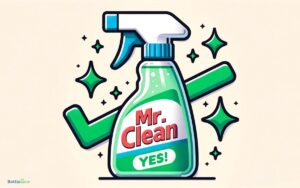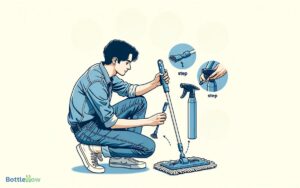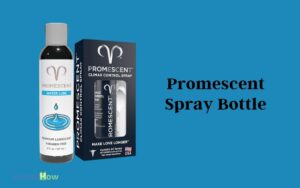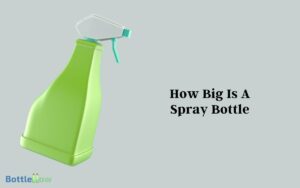Why Is My Spray Bottle Not Misting? Explored!
Your spray bottle isn’t misting likely due to a clogged nozzle, blocked tube, or faulty pump. Start by checking for debris and clear the nozzle using a needle or warm water.
Examine the tube for kinks or blockages and clean it thoroughly. Inspect the trigger and pump for cracks, ensuring they function smoothly.
Air leaks are common; tighten the nozzle and inspect the gasket. Check for damaged O-rings and verify proper assembly alignment.
By troubleshooting each component step-by-step, you can pinpoint the exact cause. Continue on to master all the intricate details necessary for effective spray bottle repair.
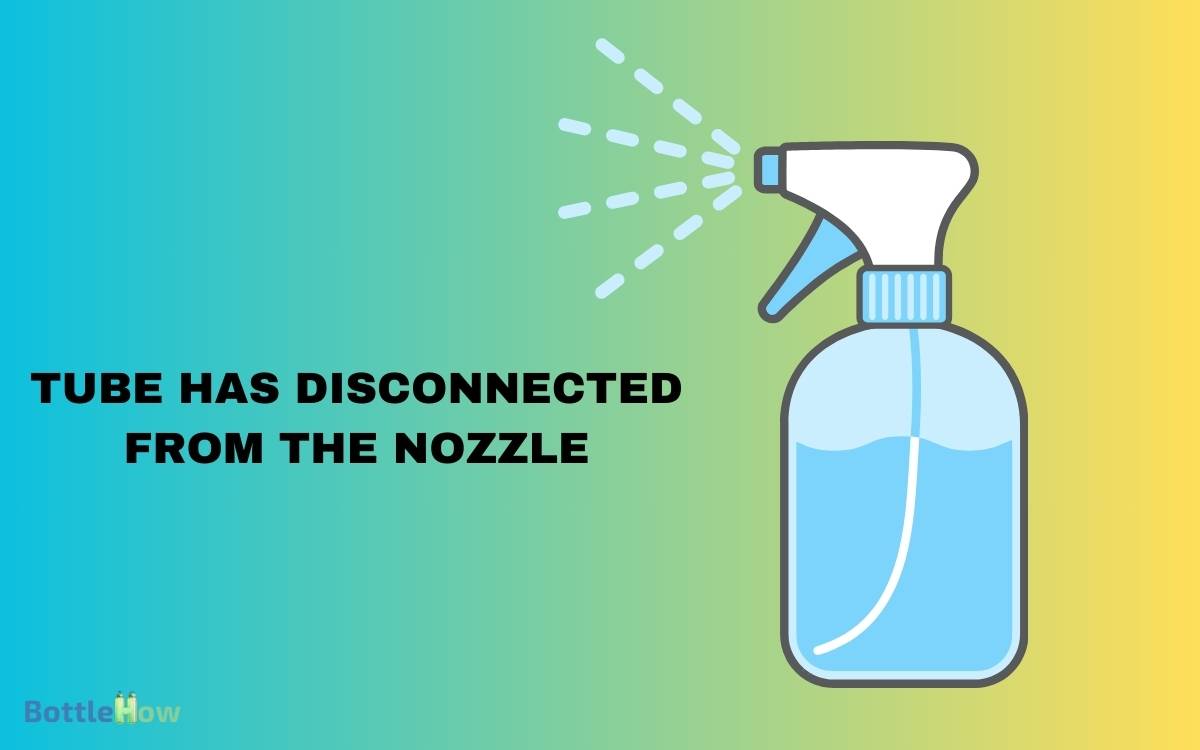
Key Takeaways
Clogged Nozzle
When your spray bottle isn’t misting, the first thing you should check is whether the nozzle is clogged. Disassemble the nozzle by unscrewing it from the bottle.
Inspect the tiny holes for any visible debris or buildup. Use a needle or pin to carefully clear the obstruction.
Be gentle to avoid enlarging or damaging the nozzle. After clearing, rinse the nozzle under warm water to remove any remaining particles.
Reassemble the nozzle and test the spray function. If it still doesn’t mist, soak the nozzle in a mixture of equal parts vinegar and warm water for 30 minutes. This solution breaks down mineral deposits effectively. Rinse thoroughly before reattaching.
Your attention to detail ensures the spray bottle functions efficiently, serving others effectively.
Blocked Tube
To address a blocked tube, start by detaching the spray bottle’s pump mechanism to gain access to the internal tubing.
Here’s how you can effectively clear the blockage:
- Inspect the Tubing: Examine the tube for any visible debris, sediment, or kinks that might obstruct liquid flow.
- Clean the Tube: Use a thin wire or pipe cleaner to dislodge any blockages. Be gentle to avoid damaging the tube.
- Flush with Water: Run warm water through the tube to make sure it’s completely clear. You can use a syringe to push water through for a thorough clean.
These steps ensure the tubing is unobstructed, promoting optimal misting. If the problem persists, evaluate other components like seals and connections for potential issues.
Broken Trigger
A broken trigger typically results from wear and tear or physical damage, causing the spray bottle to malfunction.
To diagnose, first, examine the trigger mechanism for visible cracks or detachment. If the trigger feels loose or unresponsive, the internal spring may be compromised.
Remove the trigger assembly by unscrewing it from the bottle. Inspect the lever and spring for signs of breakage or corrosion.
Replace any damaged components. If parts are unavailable, consider purchasing a new trigger assembly compatible with your bottle.
Maintaining proper lubrication of the trigger mechanism can prevent future issues. By addressing a broken trigger promptly, you guarantee the spray bottle operates efficiently, allowing you to continue serving others without interruption.
Faulty Pump
After confirming the trigger mechanism is intact, shift focus to the pump, which is often the next culprit in a spray bottle not misting properly. The pump’s role is to move the liquid through the nozzle.
When diagnosing a faulty pump, consider the following steps:
- Check for Blockages: Remove the pump and inspect for any clogs or debris obstructing the flow.
- Inspect the Spring: Make sure the internal spring isn’t broken or stuck, as this can impede the pump’s function.
- Examine the Seal: A damaged seal can prevent the pump from creating the necessary pressure.
Air Leaks
Verify for air leaks by inspecting the nozzle connection and the pump mechanism. Confirm that the nozzle is tightly secured, as even a slight looseness can disrupt the spray pattern.
Examine the pump for any damage or wear that might be allowing air to enter, compromising the misting function.
Loose Nozzle Connection
Securing a proper seal by firmly tightening the nozzle is crucial to prevent air leaks that can disrupt the misting function.
When the nozzle isn’t securely connected, air can enter the system, decreasing pressure and impeding the misting capability.
To address this, follow these steps:
- Tighten the Nozzle: Using moderate force, twist the nozzle clockwise to make sure it’s firmly connected to the bottle.
- Inspect the Gasket: Check for any wear or deformation of the rubber gasket. A damaged gasket can lead to air leaks.
- Seal Test: Fill the bottle with water, tighten the nozzle, and pump. Listen for hissing sounds, an indicator of potential air leaks.
Damaged Pump Mechanism
Diagnosing a damaged pump mechanism involves scrutinizing each component for cracks, wear, or misalignment that could cause air leaks and hinder proper misting.
You’ll need to methodically inspect the pump, tubing, and seals. Look for visible cracks or wear in the plastic or rubber parts. Misaligned components can disrupt the airtight seal, causing inefficiency.
Here’s a breakdown to guide your inspection:
| Component | Common Issue | Solution |
|---|---|---|
| Pump | Cracks | Replace |
| Tubing | Wear | Replace |
| Seals | Misalignment | Realign |
| Nozzle | Clogs | Clean |
| Trigger | Jammed | Lubricate |
Low Fluid Level
A common cause for a spray bottle not misting effectively is an insufficient fluid level, which can hinder the pump mechanism’s ability to draw liquid.
When the fluid level is too low, the dip tube may not reach the liquid, thereby failing to generate a mist.
Here’s how you can troubleshoot this issue:
- Check the Fluid Level: Make sure the bottle is filled above the dip tube’s end.
- Inspect the Dip Tube: Verify the tube isn’t damaged or dislodged.
- Refill and Test: Refill the bottle with the appropriate fluid and test the spray mechanism.
Dirt Buildup
Dirt buildup can obstruct the spray bottle’s nozzle, preventing the mist from forming properly. To resolve this, you’ll need to disassemble the nozzle. Carefully detach the nozzle from the bottle and inspect it for any visible debris.
Use a fine needle or pin to clear out any blockages from the tiny holes in the nozzle. For a thorough clean, soak the nozzle in warm, soapy water, then rinse it under running water to remove any residual particles.
Reassemble the nozzle and test the spray. If the mist still isn’t forming, repeat the process to make sure all obstructions are cleared.
Regular maintenance, including periodic cleaning, can prevent dirt buildup and ensure your spray bottle functions efficiently for those you serve.
Worn Out Parts
Frequent use of a spray bottle can lead to worn-out parts, which might hinder its ability to produce a fine mist. Worn-out seals, nozzles, and internal mechanisms can degrade over time, reducing efficiency.
To identify and address worn-out components, follow these steps:
- Inspect the Seal: Check for cracks or disintegration around the bottle’s neck. Replace if the seal is compromised.
- Examine the Nozzle: A worn nozzle can cause inconsistent spraying. Look for any visible damage or clogging.
- Test the Pump Mechanism: If the pump feels loose or unresponsive, internal components like the spring may need replacement.
Incorrect Assembly
Improper assembly of the spray bottle components can lead to malfunctioning and prevent it from misting effectively.
Guarantee that the dip tube is correctly connected to the nozzle; a loose connection can obstruct fluid flow.
Verify that the trigger mechanism is properly aligned with the pump; misalignment can cause air leaks, reducing pressure.
Check the gasket and O-ring for correct placement; any deviation can disrupt the seal, affecting misting performance.
Reassemble the bottle, following the manufacturer’s instructions meticulously. Pay attention to each part’s orientation and fit.
Thick Liquids
Thick liquids can clog the nozzle of your spray bottle, greatly impeding its ability to produce a fine mist. To resolve this issue, you need to take into account the viscosity of the liquid you’re using.
Higher viscosity liquids require specific adjustments to function at their best. Here’s a detailed approach:
- Dilution: Dilute the liquid with water to reduce viscosity. Aim for a ratio that maintains effectiveness but allows smooth passage through the nozzle.
- Nozzle Selection: Use a nozzle designed for thicker liquids. These nozzles have larger orifices, minimizing clogging.
- Regular Maintenance: Clean the nozzle frequently. Disassemble and rinse it with warm water to remove residue buildup.
Pressure Issues
When addressing pressure issues in your spray bottle, make sure the pump mechanism is fully operational and free from any blockages that could impede pressure buildup.
Examine the spring and piston within the pump. If the spring is broken or the piston is stuck, it won’t generate adequate pressure. Disassemble the pump and clean each component meticulously.
Here’s a quick troubleshooting guide:
| Issue | Check | Solution |
|---|---|---|
| Weak Spray | Inspect spring tension | Replace or adjust spring |
| No Spray | Examine piston movement | Lubricate or replace piston |
| Inconsistent Spray | Check for debris | Clean internal components |
| Stiff Trigger | Assess trigger mechanism | Lubricate or replace trigger |
| Air Leakage | Inspect pump seals | Ensure tight connections |
Seal Problems
Check for a damaged O-ring seal, as it can cause air leakage, preventing proper misting. Confirm the nozzle threads are tight; loose threads can compromise the seal and disrupt pressure.
Verify the assembly alignment, guaranteeing all components are correctly positioned to maintain a consistent seal.
Damaged O-ring Seal
Often overlooked, a damaged O-ring seal can critically impede the spray bottle’s ability to mist properly.
This small, often inconspicuous component guarantees the airtight environment necessary for the pump mechanism to function efficiently.
Here’s how you can identify and resolve issues with the O-ring:
- Inspect the O-ring: Check for visible signs of wear, cracks, or deformities. Any damage can break the seal and prevent proper misting.
- Replace the O-ring: If you find any damage, procure a replacement. O-rings are usually inexpensive and easy to find in hardware stores.
- Lubricate the O-ring: Apply a silicone-based lubricant to maintain flexibility and prolong the O-ring’s life.
Loose Nozzle Threads
Maintaining nozzle threads is essential to prevent disrupting the seal, which can cause the spray bottle to lose pressure and fail to mist correctly.
When the threads aren’t tightly secured, air leaks into the system, impairing the pressure required for atomization.
To diagnose this issue, inspect the nozzle threads for signs of wear or misalignment. Use a wrench to gently tighten the nozzle without over-tightening, which can strip the threads. If the threads appear damaged, replacing the nozzle may be necessary.
Confirm that the threads on both the nozzle and bottle are clean and free from debris. By upholding a secure, airtight seal, you’ll guarantee efficient misting performance, allowing you to serve others effectively with a fully functional spray bottle.
Improper Assembly Alignment
Guaranteeing proper assembly alignment is essential because even slight misalignments can compromise the seal, leading to pressure loss and ineffective misting.
To troubleshoot, follow these steps:
- Check the O-ring: Make sure the O-ring is seated correctly in its groove. A displaced O-ring can cause leaks and disrupt the pressure balance.
- Inspect the pump mechanism: Misalignment in the pump assembly can hinder the seal and result in a loss of pressure. Disassemble and reassemble carefully, making certain all components are properly aligned.
- Secure the nozzle: Confirm the nozzle is firmly attached and properly aligned. Misaligned nozzles can lead to uneven misting or complete spray failure.
These steps should help restore functionality and ensure your spray bottle serves others effectively.
Conclusion
If your spray bottle isn’t misting, troubleshoot each potential issue. For instance, imagine Sarah’s frustration when her plant mister failed. She checked the nozzle for clogs and ensured the tube inside was properly positioned. Still, the issue reminded her of the time her Febreze bottle won’t spray no matter how many times she squeezed the trigger. After rinsing the sprayer with warm water, she finally got her mister working again.
She cleaned the clogged nozzle with a pin, checked for any blocked tubes, and verified the trigger mechanism was intact.
After resealing the assembly and confirming no air leaks, her mister worked perfectly. By systematically addressing each component, you can restore your spray bottle’s functionality efficiently. Don’t let a minor malfunction disrupt your tasks!


